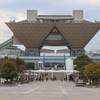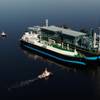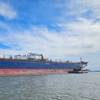Global LNG to be Major Part of Bunker Fuel Market
Liquefied natural gas (LNG) ships is expected to be the major application segment in the global LNG as a bunker fuel market.
According to a market research report, LNG fueled ships emit zero sulphur oxide emissions along with decline in carbon dioxide gas release by 25%, these are primary factors promoting the use of LNG as fuel in marine transport.
LNG is used as a marine fuel and it offers various advantages for the ships. LNG as ship fuel will reduce sulphur oxide (SOx) emissions by 90% - 95%, said marketresearch.
Lower carbon content of LNG compared to conventional ship fuels enables a 20-25% reduction of carbon dioxide (CO2) emissions. Environmental benefits related to the consumption of LNG as marine fuel is expected to drive the market growth over the forecast period.
Based on the region the market is segmented into US, Europe, China, India, Japan, and Southeast Asia. The market in Europe is estimated to be fastest growing region. Increasing demand for LNG ships in the region is expected to fuel the market growth.
Decrease in use of petroleum fuels and increased use of LNG by shipping companies in Europe could reduce dependence on oil imports from politically unstable regions are some additional factors expected to propel market growth.
Moreover, it helps to reduce air pollution from the maritime transport sector which is another factor expected to boost the market growth in Europe over the forecast period.
Europe had total reserves of 56.5 TCM of natural gas in 2016, and estimated production and consumption of natural gas in the region had reached 991.4 BCM and 1,014.4 BCM respectively, which accounted for majority share of over 26% of volume consumed globally the same year.
Key players operating in the global LNG as a bunker fuel market include Royal Dutch Shell Plc, Gasum Oy, Statoil ASA, Barents Natural Gas AS, The Linde Group, ENGIE SA, Korea Gas Corporation, Kunlun Energy Company Ltd., Eni s.p.A, CNOOC Limited, and Energize










